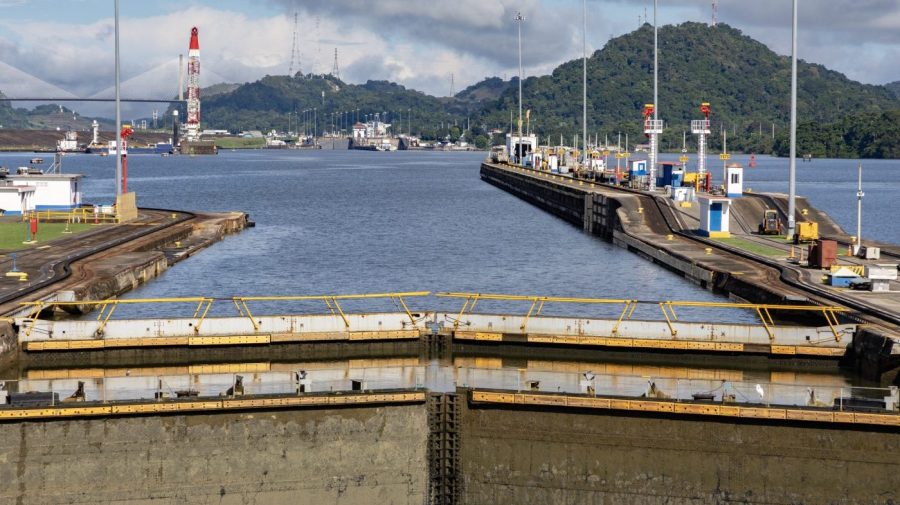The Panama Canal Repurchase Act, introduced by Rep. Dusty Johnson (R-S.D.) in Congress, has brought renewed attention to the Panama Canal’s status. The proposed legislation, supported by President-elect Donald Trump and several Republican representatives, seeks to authorize the purchase of the Canal, citing national and economic security concerns.
Such proposals are legally impossible and operationally unnecessary. Examining the reality of this vital artery of global trade makes this very clear.
The canal primarily serves U.S. maritime traffic, with 74.7 percent of vessels either originating from or heading to ports in the U.S. Other major users include Japan, China, South Korea, Chile, the European Union, Mexico, Colombia and Peru.
The Canal handles diverse vessel types, including container ships, bulk carriers, liquefied natural gas and liquefied petroleum gas carriers, vehicle carriers, tankers, refrigerated cargo vessels and cruise ships. This global traffic of more than 10,000 ships annually demonstrates the Canal’s critical role in international maritime trade, saving vessels from having to make an 8,000-mile detour around South America.
But the Canal represents much more than a strategic maritime route. To visualize its importance, imagine the Cocoli Locks, where enormous container ships wait their turn to transit. Panamanian workers, heirs to generations of canal operators, guide each movement with precision in an operation demonstrating the efficiency of Panamanian administration and the culmination of a long struggle for national sovereignty.
The Canal’s history is fundamental to understanding its present status. Built in the early 20th century by the U.S., it was for almost a century an American enclave that literally divided the country of Panama in two. The “Canal Zone,” a 10-mile-wide corridor, became the symbol of Panama’s incomplete sovereignty. The events of Jan. 9, 1964, when Panamanian students defended with their lives the right to raise the national flag in the Canal Zone, marked a turning point that eventually led to the 1977 Torrijos-Carter Treaties.
When the U.S. transferred total control of the Canal to Panama on Dec. 31, 1999, it was not a simple administrative act. This transfer represented the implementation of a sophisticated legal framework that makes any attempt at reversion virtually impossible, through three levels of legal protection:
First, Panama’s constitution declares the Canal an “inalienable heritage” of the nation, meaning it cannot be sold, transferred or ceded under any circumstances. Modifying this provision would therefore require a constitutional change.
Second, the Treaty Concerning the Permanent Neutrality and Operation of the Panama Canal — signed by Panama and the U.S. and endorsed by 40 countries, in force in perpetuity — establishes Panama as the sole guarantor of the Canal’s neutrality and operation. This international treaty, to which the U.S. is a party, does not contemplate mechanisms to transfer administration to third countries. As a signatory to this treaty, the U.S. is legally bound to respect Panama’s role as the sole administrator of the Canal.
Third, the Panamanian law contains an operational framework that ensures its autonomous operation under Panamanian control, creating an administrative structure that has proven remarkably successful.
While proponents of a repurchase cite concerns about China’s influence in the region, particularly noting Panama’s 2018 joining of the Belt and Road Initiative and Chinese companies’ management rights for ports on either side of the canal, it is crucial to understand that the Panama Canal Authority operates with total autonomy. The Authority’s board of directors, composed of 11 members, all Panamanian citizens, is appointed following a strict process established by law: nine directors are appointed by the executive with National Assembly ratification, one is designated by the legislative branch and the minister for canal affairs completes the team.
The numbers support this administration’s efficiency. Since Panama assumed control, the Canal has experienced significant improvements. The expansion completed in 2016, a $5.25 billion project under Panamanian administration, allowed the transit of larger vessels and significantly increased the waterway’s capacity. The canal generates more than $5 billion annually in tolls and maintains international standards of efficiency and safety.
The canal’s decision-making process is transparent and subject to regular audits. Service and supply contracts are awarded through international public bids, following globally recognized transparency standards. This process is supervised by multiple control entities, including Panama’s General Comptroller’s Office and independent international auditors.
At a time when global trade route stability is more important than ever, proposals to “repurchase” the canal not only ignore insurmountable legal barriers but also disregard a fundamental reality: The Panama Canal functions efficiently under its current administration, serving as a neutral point for global maritime transit. The concern over Chinese influence, while legitimate in the broader geopolitical context, does not affect the canal’s operational independence and neutrality.
Examine the evidence: a robust legal framework, efficient and transparent operation and an autonomous administration that has demonstrated its capacity to serve world trade. The canal is Panamanian. Its sovereignty is non-negotiable, and its operational success under Panamanian administration is an irrefutable fact, even as it continues to serve as a crucial artery for American and global commerce.
Nivia Rossana Castrellón is the former deputy minister of foreign affairs of the Republic of Panama.

